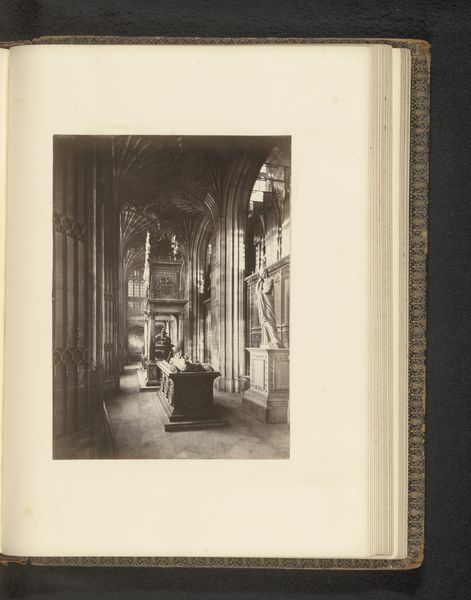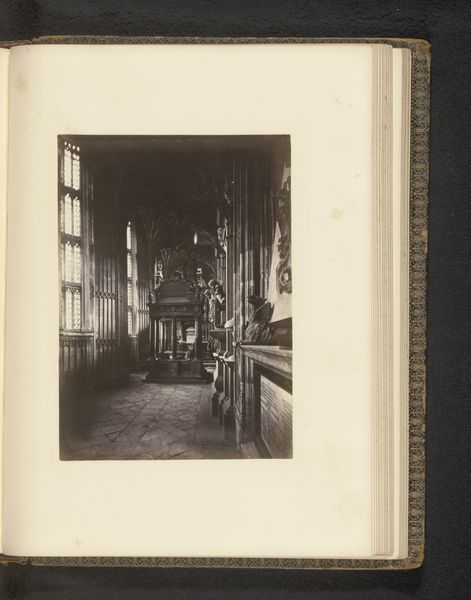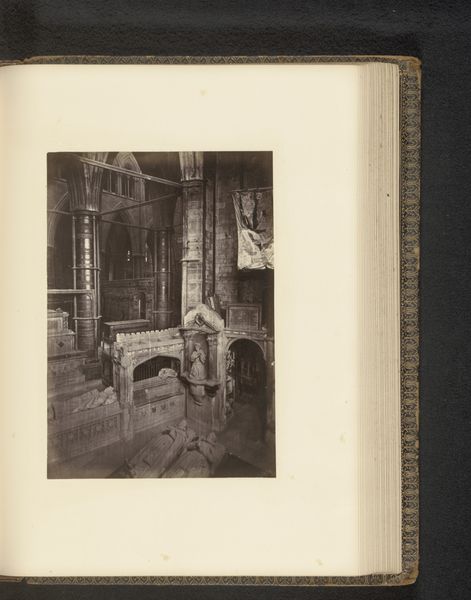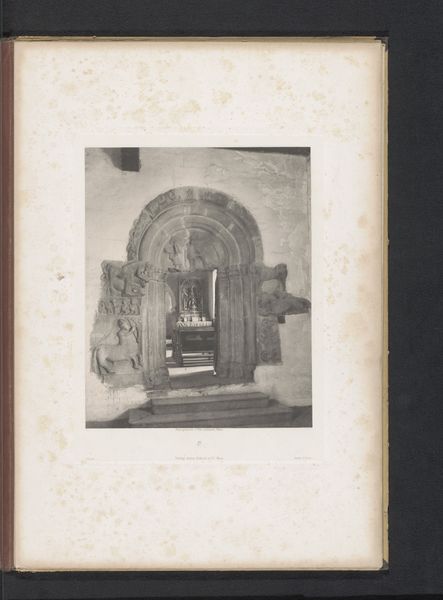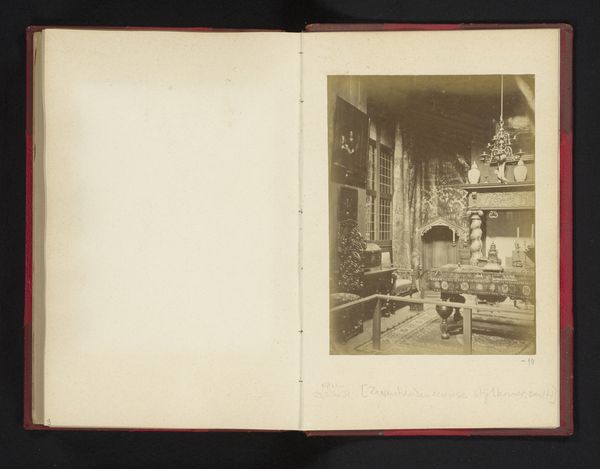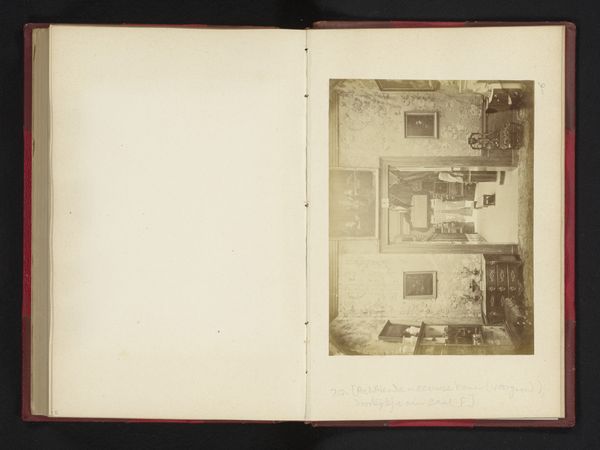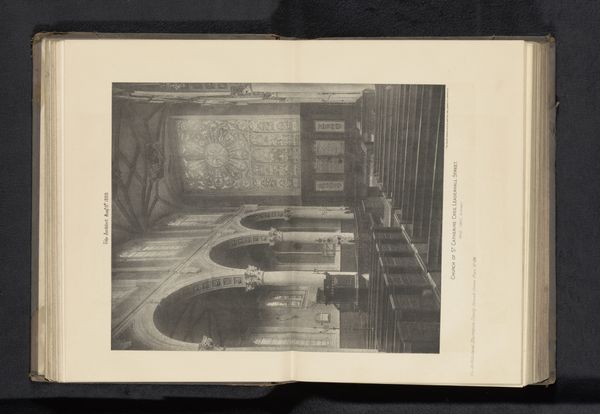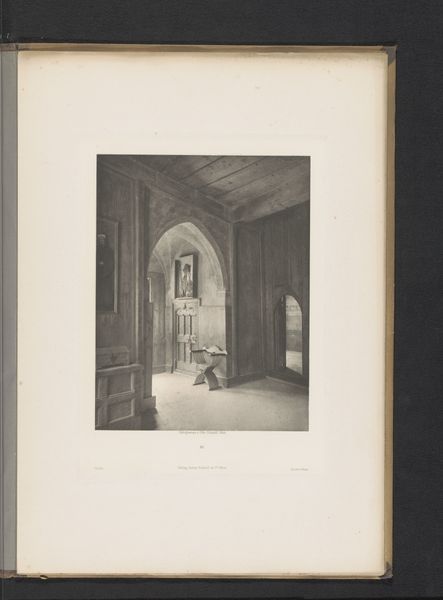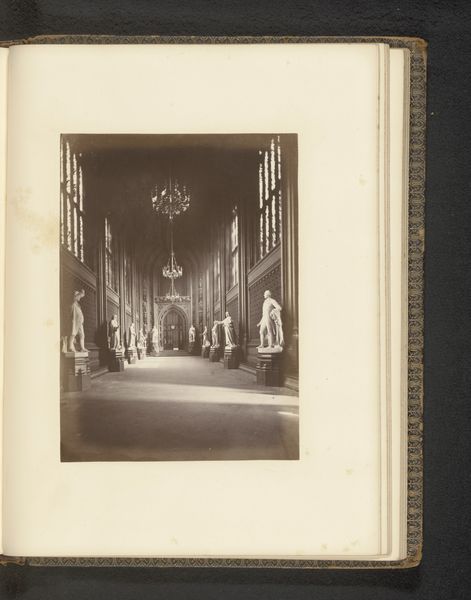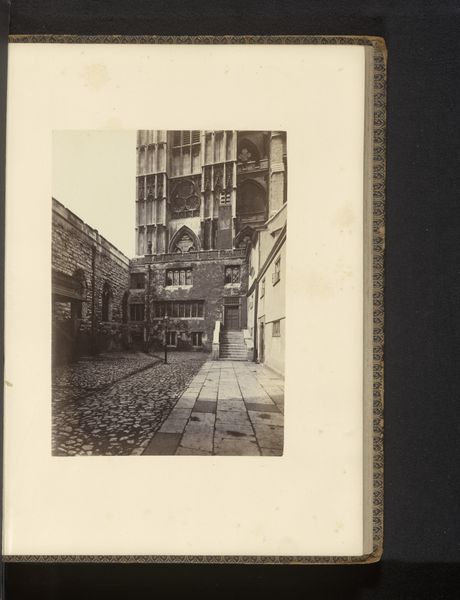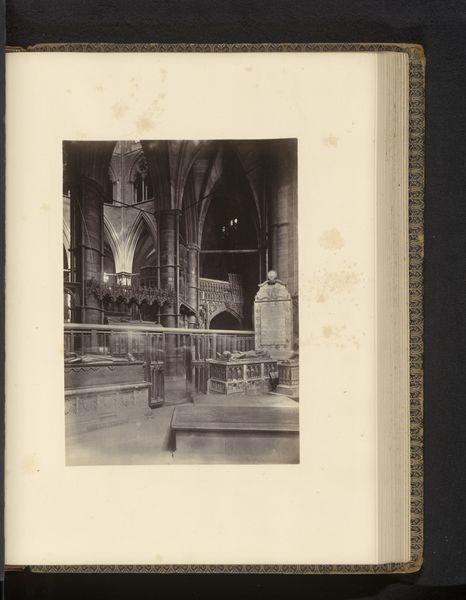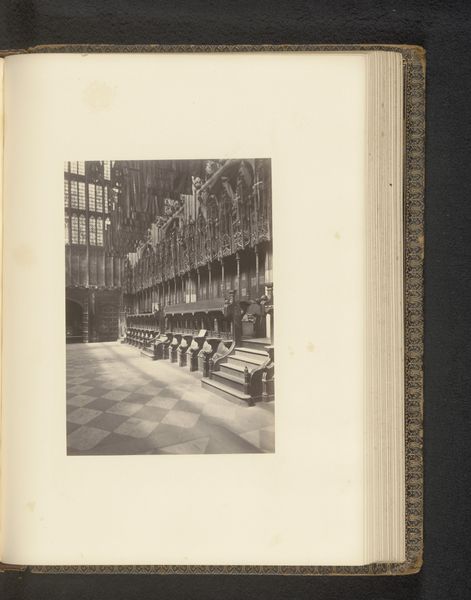
Oostelijke zijbeuk van het noordelijke transept van Westminster Abbey before 1869
0:00
0:00
print, photography, gelatin-silver-print, architecture
#
aged paper
#
toned paper
#
homemade paper
#
medieval
#
ink paper printed
# print
#
sketch book
#
landscape
#
white palette
#
paper texture
#
photography
#
personal sketchbook
#
gelatin-silver-print
#
paper medium
#
architecture
#
historical font
Dimensions: height 194 mm, width 136 mm
Copyright: Rijks Museum: Open Domain
Curator: Looking at this gelatin silver print titled "Oostelijke zijbeuk van het noordelijke transept van Westminster Abbey," created before 1869, I’m immediately struck by the way the photographer captures light. Editor: It feels so somber, almost like stepping into a forgotten space, with all the weight of history pressing down. You can almost smell the stone and the aged paper itself gives a tangible link to its age. Curator: Indeed. This print provides insight into the very Victorian-era fascination with the Gothic and medieval past, right down to the choice of photographic materials which evoke a particular aesthetic. The toned paper acts almost like a stage for this architectural scene. How do you perceive its effect on the viewer? Editor: For me, it highlights the institutional function of Westminster Abbey as a site of memory and commemoration. Notice how the arrangement and craftsmanship of the tombs aren’t just about honoring the dead. They are about power and constructing national identity. Curator: Absolutely. And considering this photograph, a gelatin silver print, it raises the question of access. Prints like these, circulating perhaps in sketchbooks or portfolios, contributed to a broader dissemination of architectural and historical knowledge beyond the elite. Editor: Precisely, that wider distribution shapes public opinion about the Abbey itself, even fostering certain expectations and attitudes towards historical preservation and national treasures. Curator: It really invites consideration of how photography reshaped the consumption and understanding of heritage, creating these mediated experiences that filtered into popular culture. Editor: The play of light and shadow is fantastic and encourages quiet contemplation on both the weight of history and those who contributed to building a particular legacy. Curator: Thinking about the gelatin silver print process itself and how it impacted production capabilities is crucial for us as materialists. This method would mean greater control over tonal range and contrast – altering reception of that Gothic style we see captured so meticulously. Editor: In a nutshell, this image exemplifies how the socio-political context molds the consumption and meaning of cultural treasures. The artist captured something timeless but also embedded it into a moment with profound consequences for its appreciation.
Comments
No comments
Be the first to comment and join the conversation on the ultimate creative platform.
